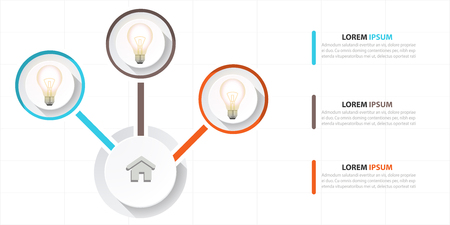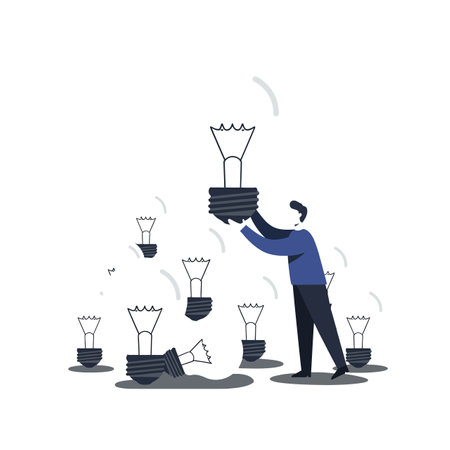Understanding the Value of a Landscape Lighting Designer
When it comes to enhancing your home’s exterior, working with a professional landscape lighting designer can truly make a difference. While DIY options might seem tempting, a certified designer brings expertise that extends far beyond simply placing lights along a walkway. Their training and experience allow them to create customized solutions that improve both safety and curb appeal. For example, a designer will know how to highlight architectural features or garden elements, while also ensuring pathways and entryways are well-lit for security. They understand the technical aspects—like voltage requirements, fixture selection, and local code compliance—which means your outdoor space won’t just look beautiful; it will function reliably and safely. Ultimately, investing in a landscape lighting designer means you’re not only adding value to your property but also creating an inviting atmosphere you can enjoy every evening.
2. Getting Prepared: What You Should Bring to the First Meeting
Before you meet with your landscape lighting designer, a little preparation goes a long way. Arriving with the right information and materials not only saves time but also helps ensure your designer truly understands your vision, your property’s unique features, and how you plan to use your outdoor spaces. Here are some key things you should gather ahead of your first consultation:
Photos and Inspiration
Bring current photos of your home and yard from different angles—front yard, backyard, pathways, patios, and any special landscaping features like water fountains or sculptures. In addition, collect inspiration images from magazines, Pinterest boards, or other online sources that reflect the style, mood, or specific lighting effects you love. These visuals help bridge the gap between what you’re picturing and what the designer can create.
Property Details
Your designer will want to know about existing elements in your landscape. This includes:
| Item | Why Its Important |
|---|---|
| Site Plan or Survey | Gives accurate property lines, structures, and major plantings for precise planning. |
| Outdoor Electrical Outlets | Shows available power sources for new lighting fixtures. |
| Irrigation Systems | Avoids conflicts when installing wiring or fixtures. |
| Mature Trees/Shrubs Locations | Affects placement and type of lighting used. |
Lifestyle and Usage Preferences
Your outdoor lighting should fit your lifestyle. Be ready to talk about:
- How often you use your yard after dark (entertaining, relaxing, security)
- Any specific areas you want highlighted (entryway, garden beds, pool area)
- Your preferred level of brightness and ambiance (subtle glow vs. dramatic illumination)
- Any concerns about light pollution or neighbors’ privacy
- Budget range for your project (even a ballpark figure is helpful)
Sample Checklist for Your First Meeting
| What to Bring to Your Lighting Design Consultation | |
|---|---|
| Photos of Property & Inspiration Images | ✔ |
| Property Survey or Site Plan (if available) | ✔ |
| Notes on Outdoor Activities & Usage Times | ✔ |
| List of Key Features to Illuminate | ✔ |
| Budget Estimate or Range | ✔ |
| Questions/Concerns about Lighting Effects or Maintenance | ✔ |
The more details you can provide during your initial meeting, the easier it will be for your landscape lighting designer to craft a personalized plan that matches both your aesthetic goals and practical needs.

3. Key Questions to Ask Your Designer
When you meet with a landscape lighting designer, it’s crucial to ask the right questions to ensure your project runs smoothly and meets your expectations. Here are some important topics to discuss during your consultation:
Project Timelines
Start by asking about the estimated timeline for your project. Knowing when each phase will happen—from design and material selection to installation—helps set clear expectations and allows you to plan around any disruptions at home. Ask if there are potential delays you should be aware of, such as weather or supply chain issues.
Materials and Fixtures
Discuss what types of lighting fixtures and materials the designer recommends for your property. Make sure to ask about durability, style options, and how each choice will handle your local climate conditions. Understanding these details up front can help you stay within budget and avoid unnecessary replacements later on.
Maintenance Needs
Every lighting system requires some level of maintenance. Ask your designer what kind of upkeep is expected for the fixtures they suggest. Find out if bulbs or transformers will need regular replacement, whether fixtures are easy to clean, and if they offer any warranties or service plans.
Energy Efficiency Options
Energy costs can add up over time, so be sure to ask about efficient lighting solutions like LED fixtures or smart controls. Discussing energy-saving options not only helps lower your utility bills but also reduces environmental impact—a win-win for your wallet and the planet.
Additional Considerations
If you have concerns about neighborhood lighting regulations, light pollution, or integrating new lights with existing systems, bring them up early. The more open your communication, the smoother your project will go—and the happier you’ll be with the end result.
4. Budgeting and the Proposal Process
When you begin working with a landscape lighting designer, one of the most important conversations you’ll have centers around your budget. Understanding how designers estimate costs and what influences pricing will help ensure that your project meets both your vision and your financial expectations. Here’s what to know about the budgeting and proposal process in the U.S.
How Designers Estimate Costs
Designers typically consider several factors when estimating the cost of your landscape lighting project. These include the size and complexity of your property, the type and number of fixtures required, installation challenges (like hard-to-access areas or existing landscaping), and even local labor rates. Being upfront about your overall budget helps your designer make recommendations that are realistic for your situation.
Main Factors That Impact Pricing
| Factor | Description |
|---|---|
| Property Size | Larger properties often require more fixtures and wiring, increasing costs. |
| Fixture Quality | Higher-end, energy-efficient fixtures cost more but may save on long-term energy bills. |
| Design Complexity | Custom designs or features like color-changing lights add to the price. |
| Installation Conditions | Difficult terrain or hardscapes (like stone paths) can increase labor costs. |
| Permitting & Codes | Some municipalities require permits, which add to the total expense. |
What to Expect in Your Detailed Proposal
A professional landscape lighting designer will provide you with a detailed written proposal before any work begins. This document should outline:
- The scope of work: What areas will be illuminated and how.
- Types of fixtures: Including brands, models, and placement details.
- Total estimated cost: With breakdowns for materials, labor, and any additional services.
- Timeline: Estimated start and completion dates.
- Warranty information: For both products and workmanship.
Balancing Your Vision with Your Budget
If the initial proposal exceeds your budget, don’t hesitate to discuss alternatives. A good designer is used to value engineering—finding creative ways to achieve a similar effect for less. This might mean phasing the project, choosing different fixture types, or focusing on high-impact areas first. Open communication ensures you get the best result for your investment without surprises along the way.
5. Design Review and Collaboration
Once your landscape lighting designer presents the initial plan, you’ll enter a collaborative phase known as design review. During this stage, it’s normal—and even expected—to go through several rounds of feedback and revisions. The first step is usually a walk-through of the proposed design, where your designer explains their choices and how each lighting feature supports your goals. This is your chance to ask questions, raise concerns, and point out areas that might need adjustments.
Effective communication is key here. Be honest about what you like and what doesn’t feel right, but try to be specific. Instead of saying “I don’t like this,” explain why—maybe a certain area feels too bright or not welcoming enough. Good designers will appreciate clear input because it helps them better understand your vision.
Expect the revision process to involve back-and-forth exchanges. Your designer may provide updated renderings or mock-ups based on your comments, and they’ll likely ask for confirmation before moving forward with major changes. To keep things moving smoothly, respond promptly to emails or calls, and take notes during meetings so you can reference details later.
If you’re working within a budget, communicate any cost concerns early in the process. Designers can often suggest alternative fixtures or layouts to help manage expenses without sacrificing style or safety. Remember: collaboration isn’t just about approving plans—it’s about building trust and working together toward the outdoor space you’ve always wanted.
6. Installation and Post-Project Support
Once you’ve finalized your landscape lighting design, the installation phase begins. Typically, your designer will coordinate a schedule that works for you and their team. During installation, expect some temporary disruption—installers may need access to your yard, garden beds, or walkways to run wiring and place fixtures. Your main responsibility is to ensure clear access and communicate any concerns about pets, irrigation systems, or delicate plants before work begins.
After the lights are installed, most reputable designers will walk through the project with you at dusk or after dark. This walkthrough allows you to see the lighting in action and request any minor adjustments on placement or brightness. Don’t hesitate to ask questions; good designers want you to love the final result.
It’s also important to discuss ongoing maintenance. Ask your designer what kind of care your lighting system will need over time—this could include cleaning lenses, replacing bulbs, or checking timers and transformers. Many companies offer maintenance packages, which can be a smart investment for keeping everything looking its best year-round.
Finally, clarify warranty coverage. Find out what parts and labor are covered, how long the warranty lasts, and how to make a claim if something goes wrong. Reliable designers will provide this information up front and explain what support you’ll receive after the project is complete.
By understanding what happens during installation and knowing your responsibilities, you can help the process go smoothly. And by asking about post-project support and warranties, you’ll feel confident that your landscape lighting investment will shine for years to come.

